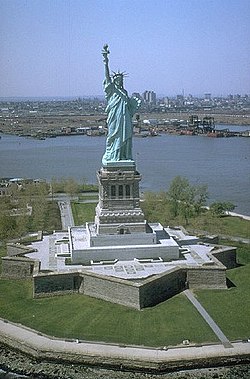Prior to 20th century
| | This section needs expansion. You can help by adding to it. (January 2016) |
| History of New York City |
|---|
 |
| Lenape and New Netherland, to 1664 New Amsterdam British and Revolution, 1665–1783 Federal and early American, 1784–1854 Tammany and Consolidation, 1855–1897 (Civil War, 1861–1865) Early 20th century, 1898–1945 Post–World War II, 1946–1977 Modern and post-9/11, 1978–present |
| See also |
| Timelines: New York City • Manhattan • Bronx • Brooklyn • Queens • Staten Island Transportation Category |
- 1657 – Flushing Remonstrance
- 1683 – Queens County created. [1]
- 1790 – Population: 16,014. [2]
- 1821 - Horse racing track opens. [3]
- 1858 - First all-star baseball game and first games in which admission is charged takes place in Corona at the old Fashion Race Course. [4]
- 1860 – Population: 57,391. [2]
- 1870 – Population: 73,803. [2]
- 1880 – Population: 90,574. [2]
- 1889 – BMT Myrtle Avenue Line begins operating.
- 1890 – Population: 128,059. [2]
- 1898 – January 1: Queens is established as a borough in the City of Greater New York. The borough consists of only part of the previous boundaries of Queens County; Nassau County is established in the remaining part. [5]

